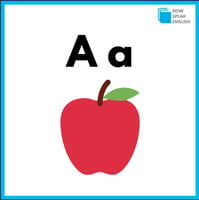Discovering the Differences: University Education and Lifestyle in Korea and the United States
As students around the world aspire to attend a university, it is essential to understand the cultural and educational differences between countries. In this article, we will explore the key contrasts between university education and lifestyle in Korea and the United States. By examining these differences, we hope to inspire and guide students who are considering pursuing their higher education in the United States.

University Education: Korea vs. the United States
Admission Process
The university admission process is one of the most significant differences between Korea and the US. In Korea, the university entrance exam, or 수능 (Suneung), plays a crucial role in determining students' futures. This standardized test, taken by high school seniors, is the primary determinant of college admission. However, Korea also has an alternative admission process called 수시 (Susi), which evaluates high school academic performance, extracurricular activities, and other factors. Although 수시 exists, the high school academic performance still plays a vital role in both admission processes.
In contrast, the US admission process is more holistic, considering various factors such as grades, standardized test scores (SAT or ACT), extracurricular activities, recommendation letters, and personal essays. This broader approach allows for a more comprehensive evaluation of students, considering their personal strengths and achievements.
Academic Structure
Korean universities tend to follow a more rigid academic structure, focusing on theoretical knowledge and rote memorization. Lectures are the primary mode of instruction, and professors often maintain a distant, authoritative relationship with their students.

American universities, on the other hand, emphasize critical thinking and active learning. Professors often engage students in discussions and group work, encouraging them to question and analyze the subject matter. This fosters a more interactive, collaborative learning environment.
Degree Programs
In Korea, most degree programs are four years long, and students must choose their major upon entering university. This decision is often final, with limited opportunities to switch majors or pursue a double major.
![]() American universities offer more flexibility, allowing students to explore their interests before declaring a major.
American universities offer more flexibility, allowing students to explore their interests before declaring a major.
Students can also pursue double majors, minors, or even create their own interdisciplinary programs, tailoring their education to their passions.
Language of Instruction
While Korean universities primarily conduct classes in Korean, many US universities offer a wide range of courses in English, which can benefit international students. Some Korean universities are also making efforts to increase the number of English-taught courses, but the transition remains a work in progress.
If you haven't already, be sure to get our free full guide to teaching your own students.
Lifestyle Differences: Korea vs. the United States
Campus Life
While it is true that Korean university students often live in dormitories with rules regarding curfews and visitation, these regulations are not the only aspects that define their daily lives. Korean university students experience a lively social scene, which includes numerous social gatherings, festivals, and events. However, alongside these activities, students often face immense pressure to secure jobs early in their academic journey, starting from their freshman year. This intense focus on future employment can lead to a highly competitive atmosphere and a rigorous study schedule, sometimes overshadowing the more relaxed aspects of college life.

American universities are typically more lenient, offering a more relaxed and autonomous environment. Students can live on or off-campus, participate in various clubs and organizations, and enjoy a more diverse social life.
Extracurricular Activities
Extracurricular activities play a crucial role in American university life, with numerous clubs, organizations, and sports teams available to students. These opportunities allow students to develop leadership, teamwork, and communication skills while pursuing their interests.
Korean universities also offer extracurricular activities, but they tend to be less diverse and less emphasized compared to their American counterparts.
Socialization and Networking
American universities provide a wealth of opportunities for socialization and networking, through events, clubs, and parties. Students often form lifelong friendships and professional connections, which can be invaluable in their future careers
In Korea, while socialization and networking are also important, the focus is often on maintaining relationships with high school friends or forming connections through membership in school-affiliated organizations.
Opportunities for cross-cultural interactions may also be more limited in Korean universities compared to American ones, where diverse student populations are more common.
Work-Study Balance
Korean university students often face immense pressure to succeed academically, which can result in a rigorous study schedule and limited free time. Balancing work and study can be challenging, as part-time jobs are often frowned upon, and students may not receive the same level of support from their universities as they would in the US.
In the United States, part-time jobs and internships are widely accepted, and universities often provide resources to help students balance their academic and professional commitments. This creates a more supportive environment for students to gain practical experience and develop their careers alongside their education.
Conclusion
Understanding the differences between university education and lifestyle in Korea and the United States is essential for students considering pursuing their higher education abroad. While both countries offer unique opportunities and experiences, the United States provides a more flexible, diverse, and interactive learning environment that may better suit students seeking a well-rounded education and an enriching campus life. By exploring these differences, students can make informed decisions and prepare for the exciting journey ahead.



